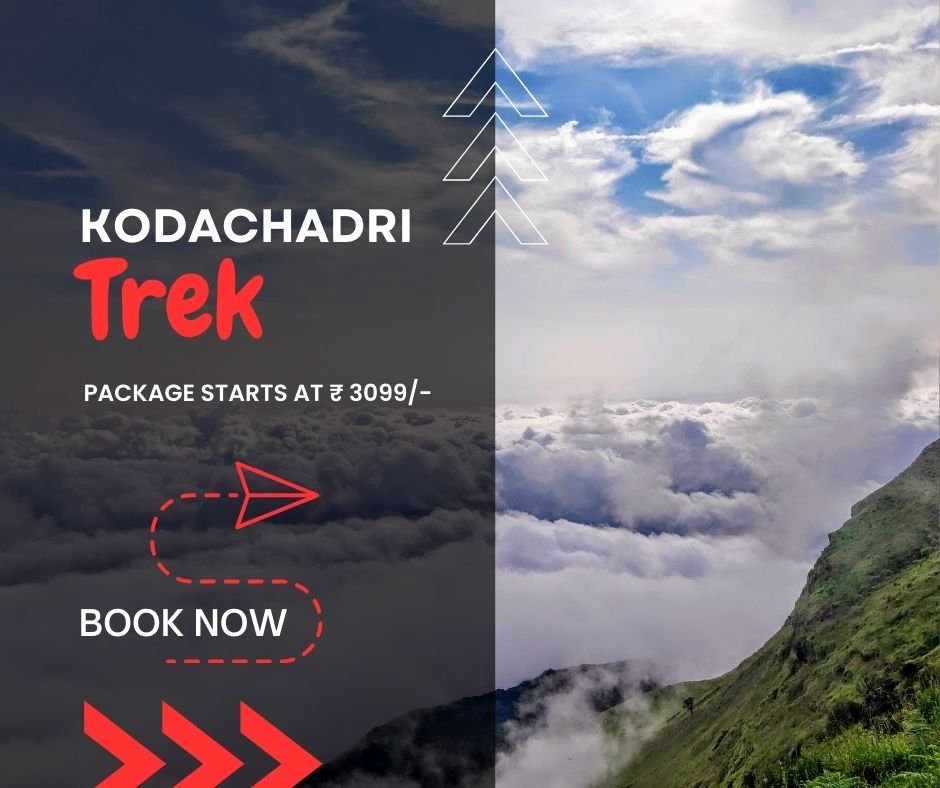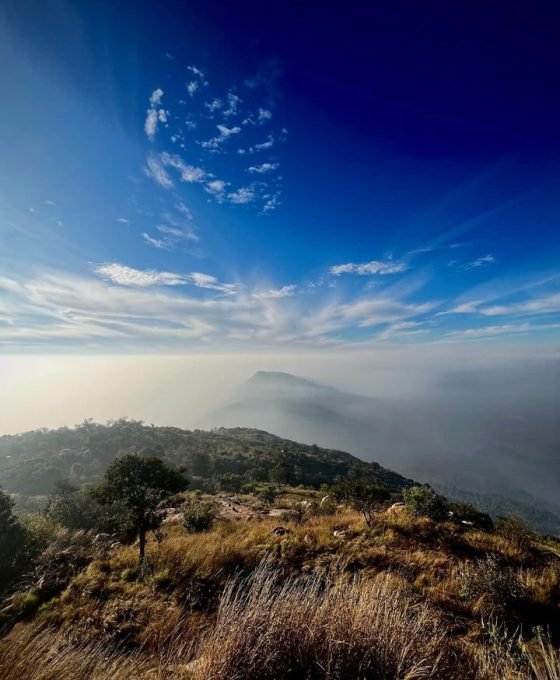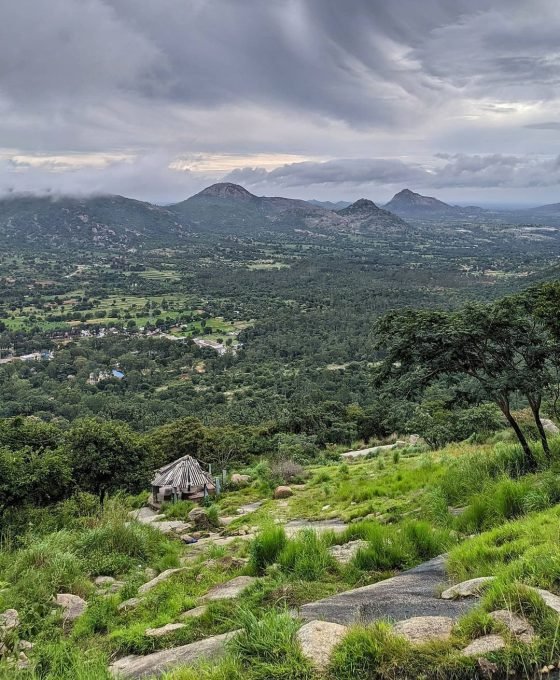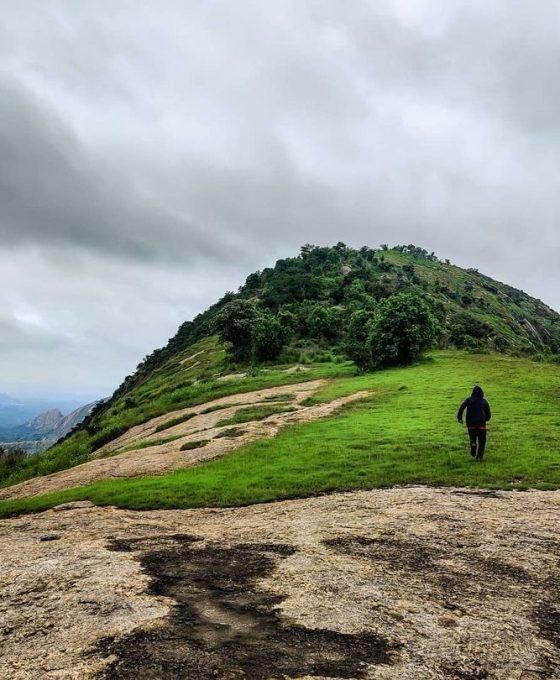Things to do in Bangalore

Trekking

Night Trek

Camping

Parties

One Day Trips
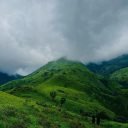
Two Days Trip
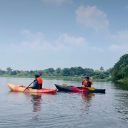
Adventure

Workshop

Trekking

Camping

One & Two Day Trips

Adventure & Parties
The Best Time to Visit the Tunga River for Scenic Views
Introduction
The Tunga River, known for its pristine waters and serene landscapes, is an essential watercourse in southern India. Its natural beauty, as it flows through the lush landscapes of Karnataka and Kerala, enriching the lives and landscapes it touches, is a source of inspiration and appreciation. This article delves into the river’s journey, significance, and the myriad aspects that make it a vital natural resource.
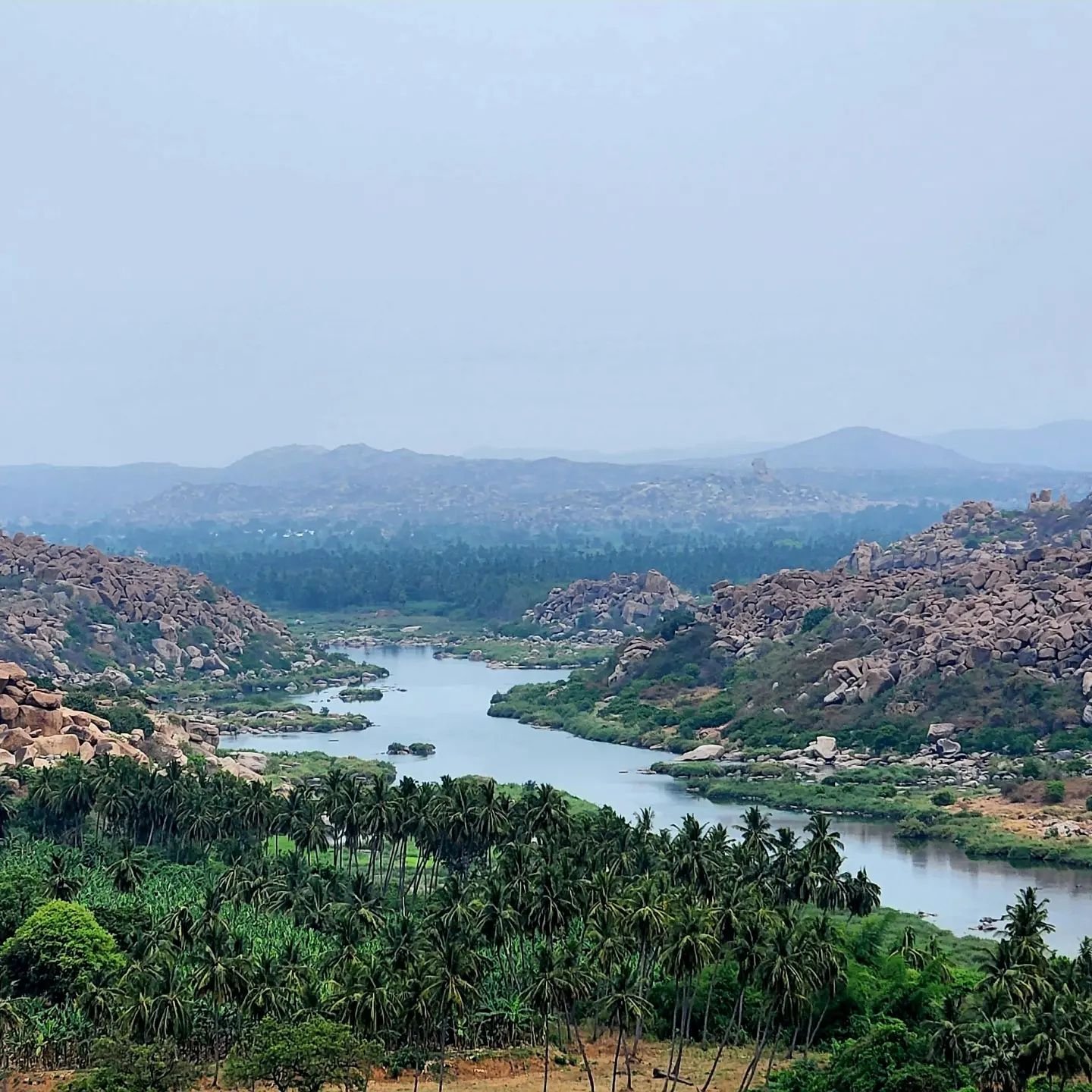
Origin and Source of Tunga River
Location and Geographical Significance
The Tunga River originates in the Western Ghats, specifically at Gangamoola, a hill in the Chikkamagaluru district of Karnataka. This location is significant both geographically and ecologically, as the Western Ghats are a UNESCO World Heritage site known for their rich biodiversity.
Historical Background
The River, a silent witness to the rise and fall of various civilizations, has nurtured ancient settlements and contributed to the growth of towns and villages along its banks. Its historical significance as a vital resource for agriculture and daily life has shaped the culture and economy of the region, instilling a sense of awe and respect for its enduring role in history.
Geographical Journey
Location and Geographical Significance
The Tunga River originates in the Western Ghats, specifically at Gangamoola, a hill in the Chikkamagaluru district of Karnataka. This location is significant both geographically and ecologically, as the Western Ghats are a UNESCO World Heritage site known for their rich biodiversity.
Historical Background
The Tunga River, a silent witness to the rise and fall of various civilizations, has nurtured ancient settlements and contributed to the growth of towns and villages along its banks. Its historical significance as a vital resource for agriculture and daily life has shaped the culture and economy of the region, instilling a sense of awe and respect for its enduring role in history.
Ecological Significance
Biodiversity Hotspot
The Tunga River basin is a biodiversity hotspot, home to a diverse array of plant and animal species. Its unpolluted waters and surrounding forests nurture a vibrant ecosystem, supporting endemic species and rare wildlife.
Conservation Efforts
Various conservation projects aim to protect the river’s biodiversity. Initiatives by government bodies, NGOs, and local communities focus on preserving natural habitats, preventing pollution, and promoting sustainable practices.
Cultural Importance
Role in Local Traditions and Festivals
The Tunga River holds a sacred place in the hearts of the local population. It is integral to various religious ceremonies, festivals, and traditions. The river is often revered in local folklore and is associated with numerous temples and sacred sites. Its role in local traditions and festivals is a testament to its cultural importance.
Influence on Local Livelihoods
The river supports agriculture, fishing, and other livelihoods. The fertile banks of the Tunga provide ideal conditions for farming, while its waters sustain fishing communities and help local industries. The river’s economic impact is significant, providing income and employment opportunities for many in the region.
Historical Significance
Ancient Civilizations and Settlements
Archaeological findings suggest that the River basin has been inhabited since ancient times. Numerous historical sites along the river indicate the presence of early human settlements and thriving civilizations.
Historical Monuments and Sites
The river is bordered by numerous historical landmarks, such as temples and forts, that narrate its illustrious past. These attractions draw in historians and tourists, contributing to the river’s cultural and historical significance.
Economic Impact
Agriculture and Irrigation
The Tunga River is crucial for regional agriculture. It provides water to irrigate extensive farmland and enables the growth of crops like rice, sugarcane, and vegetables. Irrigation initiatives along the river have greatly enhanced agricultural yields.
Tourism and Economic Development
Tourism centered around the River has grown, with attractions like scenic spots, historical sites, and adventure activities drawing visitors. This influx of tourists has spurred local economic development, providing income and employment opportunities for communities.
Tourism and Attractions
Major Tourist Destinations
Surrounding the river are several tourist attractions, such as Jog Falls, which is among India’s tallest waterfalls. The scenic landscapes and peaceful ambiance attract nature enthusiasts and adventure seekers alike.
Adventure Activities and Ecotourism
Adventure activities like trekking, rafting, and bird watching are popular along the Tunga River. Ecotourism initiatives promote sustainable travel, ensuring the region’s natural beauty and biodiversity are preserved for future generations.
Hydrological Characteristics
Seasonal Variations and Flow Patterns
The flow of the Tunga River varies with the seasons. Monsoon rains swell the river, while the dry season reduces water levels. Understanding these patterns is crucial for managing water resources and planning irrigation projects. The river’s flow patterns and seasonal variations are key factors in the region’s water management strategies.
Water Quality and Management
Maintaining the water quality of the Tunga River is essential for the health of ecosystems and human populations. Regular monitoring and management practices help control pollution and ensure the river remains a clean and reliable water source.
Conservation and Management
Government Initiatives and Policies
Government policies and initiatives are pivotal in conserving the Tunga River. Efforts such as afforestation programs, pollution control measures, and sustainable development initiatives are essential for maintaining the river’s health and biodiversity.
Community Involvement and NGO Contributions
Local communities and NGOs are active participants in conservation efforts. Grassroots initiatives, education programs, and collaborative projects with governmental bodies are essential for effective river management.
Hydroelectric Projects
Major Dams and Power Stations
The Tunga River is home to several hydroelectric projects that generate regional power. While these projects provide the necessary energy, they also challenge the river’s ecosystem and local communities.
Impact on Local Communities
Hydroelectric projects can significantly impact local communities, including displacement and changes in livelihood. Balancing development with the needs of these communities is a crucial challenge.
Tunga River in Literature
Depictions in Poetry and Prose
The beauty and significance of the River have inspired many writers and poets. Literary works celebrating the river highlight its cultural and emotional impact on the region’s people.
Inspirational Stories
Stories of resilience and connection to the Tunga River testify to its enduring influence and underscore its role as a source of inspiration and sustenance.
Educational and Research Importance
Research Projects and Studies
The Tunga River is the focus of numerous research projects and studies. Scientists and researchers explore its ecological, hydrological, and cultural aspects to understand better and inform conservation efforts.
Role in Academic Curricula
The river is essential in academic curricula, especially environmental science, geography, and history. Educational programs emphasize the need to protect and conserve this vital resource.
Recreational Activities
Boating and Fishing
Boating and fishing are popular recreational activities on the Tunga River. These activities provide enjoyment and relaxation while also contributing to the local economy.
Nature Walks and Bird Watching
The river’s scenic surroundings make it ideal for nature walks and bird watching. Enthusiasts can explore the rich biodiversity and enjoy the tranquil environment.
Success Stories
Notable Conservation Achievements
Highlighting notable conservation achievements along the Tunga River showcases the positive impacts of dedicated efforts. These stories inspire continued action and support.
Inspirational Initiatives
Inspirational initiatives demonstrate the potential for meaningful change. These efforts serve as models for other conservation projects and motivate broader participation.
FAQ's
What is the origin of the Tunga River?
The Tunga River originates from Gangamoola in the Western Ghats, located in the Chikkamagaluru district of Karnataka.
How does the Tunga River contribute to local agriculture?
The Tunga River provides essential water for irrigation, supporting the cultivation of various crops and boosting agricultural productivity in the region.
What are some major tourist attractions along the Tunga River?
Major tourist attractions include Jog Falls, scenic landscapes, historical sites, and opportunities for adventure activities like trekking and rafting.
How does pollution affect the Tunga River?
Pollution from industrial discharge, agricultural runoff, and domestic waste poses significant threats to the river’s water quality and ecosystem health.
What conservation efforts are in place for the Tunga River?
Conservation efforts include government initiatives, NGO projects, and community involvement focused on protecting natural habitats, preventing pollution, and promoting sustainable practices.
Why is the Tunga River important in local culture?
The River is sacred in local traditions, religious ceremonies, and festivals. It is also integral to the livelihoods and cultural identities of the communities along its banks.
Conclusion
The Tunga River is more than just a watercourse; it is a vital lifeline that sustains ecosystems, supports local economies, and enriches cultural traditions. This precious resource requires concerted efforts from government bodies, NGOs, local communities, and individuals. By understanding the river’s significance and addressing its challenges, we can ensure that the Tunga River continues to thrive for generations.
Share Your Opinion!
Picks By Erica
Makalidurga Trek
Siddara Betta Trek
Handi Gundi Betta
- Skandagiri Trek
- Kumara Parvatha Trek
- Uttari Betta Trek
- Makalidurga Trek
- Tadiandamol Trek
- Ettina Bhuja Trek
- Nandi Hills Trek
- Mullayanagiri Trek
- Kunti Betta Trek
- Devarayanadurga Trek
- Madhugiri Trek
- Narasimha Parvatha Trek
- Pushpagiri Trek
- Kurinjal Trek
- Ombattu Gudda Trek
- Kabbaladurga Trek
- Siddara Betta Trek
- Bheemeshwari Trek
- Bandaje Arbi Falls Trek
- Jenukal Gudda Trek
- Bababudangiri Trek
- Ranganathaswamy Betta Trek
- Kumta Beach Trek
- Bananthimari Betta Trek
- Netravathi Trek
- Bidarakatte Trek
- Kote Betta Trek
- Rayakottai Trek
- Sharavathi Valley Trek
- Savandurga Trek
- Anthargange Trek
- Nishani Motte Trek
- Kodachadri Trek
- Kudremukh Trekking Adventure
- Nirvana Beach Camping
- Handi Gundi Betta Trek
- Sathodi Falls Karnataka
- Channagiri Betta Trek
- Gudibande Fort Trek
- Dudhsagar Falls Trek
- Bandaje Trek
- Kumaraparvata Trekking
- Ravugodlu Trek
- Mandalpatti Trek
- Z Point Trek
- Agumbe
- Ettina Bhuja
- Savandurga
- Shivagange
- Dudhsagar Falls
- Dudhsagar Falls
- Kodachadri
- Sirimane Falls
- Iruppu Falls
- Rayakottai
- Banasura Hill
- Netrani Island
- Netravati Peak
- Mullayanagiri
- Gokarna
- Dandeli
- Chikkamagaluru
- Coorg
- Bangalore
- Kemmangundi
- Karnataka India
- Mysore
- Sakleshpur
- Kotagiri
- Kollur
- Kumta
- Yana
- Devarayanadurga
- Hampi
- Mandalpatti Peak
- Madhugiri Hill
- Avani Betta
- Didupe
- Kumara Parvatha
- Shimoga
- Ermayi Falls
- Manchabele Reservoir
- Bheemeshwari
- Kaiwara
- Kodaikanal Falls
- Murkannu Gudda
- Surla Waterfalls
- Kavaledurga Fort
- Kemmangundi
- Magod Falls
- Jog Falls
- Kanva Dam
- Pandavara Betta
- Ramadevara Betta
- Bhuvanagari Fort
- Athirapally Waterfalls
- Muthati
- Kunthi Hills
- Cubbon Park
- Bannerghatta Biological Park
- Innovative Film City
- Bull Temple
- Murudeshwar
- Markonahalli Dam
- Janapada Loka
- Mallalli Falls
- Devaramane Viewpoint
- Kalasa
- Nagarhole National Park
- Talakadu
- Gangadikal Peak
- Chunchi Falls
- Channagiri Hills
- Horagina Betta
- Kyatanamakki
- Bheemana Kindi
- Muregar Falls
- Devimane Ghat
- Gudavi Bird Sanctuary
- Agni Gudda
- Kurinjal Peak
- Apsarakonda Falls
- Belur And Halebidu
- Soormane Falls
- Srirangapatna Temple
- Hampi Trek
- Dandeli Falls
- Wayanad Trek
- Chikmagalur Hills
- Agumbe Falls
- Paithalmala
- Bangalore Palace
- Mashobra Hills
- Night Camping
- Kaveri Nisargadhama
- Unchalli Falls
- Sakleshpur Falls
- Chikmagalur Trekking Places
- Kaginahare
- Rani Jhari
- Abbey Falls
- Kudremukh National Park
- Bannerghatta National Park
- Nijagal Betta
- Madikeri Fort
- Hidlumane Falls
- Iruppu Falls
- Belkal Theertha Falls
- Devarayanadurga Betta
- Gopalaswamy Betta
- Devarayanadurga Fort
- Hebbe Waterfalls
- Kid Friendly Places Near Bangalore
- Camping Near Bangalore
- Two Day Trip From Bangalore
- Weekend Outing In Bangalore
- Trekking Near Bangalore
- One Day Trip Near Bangalore
- Parties In Bangalore
- Trekking Packages
- Night Trek Bangalore
- Treks Near Bangalore
- Night Trekking In Bangalore
- Weekend Getaways From Bangalore
- Bangalore To Coorg Package
- Best Tourist Places In Kerala
- Team Outing Near Bangalore
- One-Day Road Trips From Bangalore By Car
- Ettina Bhuja Distance From Bangalore
- Hill Stations Near Banaglore
- One Day Trek
- Trekking Near Myosre
- Waterfalls Near Bangalore
- Picnic Spots Near Bangalore
- Top Tourist Places In Bangalore
- Trekking In Bangalore
- Chikmagalur Trekking Packages
- Bangalore To Hampi Distance
- New Year Events In Bangalore
- Sunrise Trek Near Bangalore
- Places To Visit In Madikeri In 2 Days
- Go Karting In Bangalore
- Trampoline Park Bangalore
- Best Street Food In Bangalore
- Places To Visit In Tumkur
- Agumbe Tourist Places
- Best Beach In Gokarna
- Kanakapura Waterfalls
- Sunrise At Nandi Hills
- Uttari Betta Trek Location
- Bangalore To Gokarna
- Bangalore To Coorg
- Bangalore To Ooty
- Nandi Hills Tent Stay
- Dandeli Trekking
- Murudeshwar Sightseeing
- Waterfalls In Udupi
- Solo Travel
- Adventure
- Beautiful Places To Visit In India
- Kolukkumalai Sunrise
- Mysore Trip
- Coorg Waterfalls
- Chikmagalur Hill
- White Hills Bangalore
- Sholay Shooting Hill Top
- Activities To Do In Bangalore
- Night Camping
- Hills In Bangalore
- Places To Visit Near Adiyogi
- Trekking In Karnataka
- Agumbe Ghat
- Famous Places In Karnataka
- Highest Peak In Karnataka
- Hill Stations Near Bangalore
- Historical Places In Karnataka
- Bandipur Safari Timings
- Beaches Near Bangalore
- Chikmagalur Tourist Places
- Coorg Trekking
- Famous Temples In Bangalore
- Fun Activities In Bangalore
- Gokarna Main Beach
- Gokarna Trip
- Historical Places In Bangalore
- Picnic Spots In Bangalore
- Places Around Bangalore
- Places In Gokarna
- Places To Visit In Bangalore With Family
- Places To Visit In Chikmagalur
- Places To Visit In Gokarna
- Places To Visit In Honnavar
- Places To Visit In Shimoga
- Rock Climbing In Bangalore
- Sakleshpur Places
- Sakleshpur Tourist Places
- Sakleshpur Trek
- Shimoga Places To Visit
- National Parks In Karnataka
- Tourist Places In Karnataka
- Tourist Places Near Bangalore Within 100 Kms
- Traditional Food Of Karnataka
- Treks In Karnataka
- Sirsi Karnataka
- Coorg Falls
- Kunti Betta From Bangalore
- Kunti Betta Trek Distance
- Nature Places In Bangalore
- Mysore Tourist Places
- Muthanga Wildlife Safari
- Cities In Karnataka
- Coastal Karnataka
- Devarayanadurga Distance
- Places To Visit In Chikmagalur In 2 Days
- Places To Visit In Hassan
- Sangam Waterfalls
- Sangam Waterfalls
- Savandurga Trek Distance
- Skandagiri Trek Start Point
- Kodaikanal Tourist Places
- Bangalore To Munnar
- Bangalore To Hampi
- Bangalore To Coorg Distance
- Banglore To Ooty
- Bangalore To Sakleshpur
- Bangalore To Hogenakkal
- How To Reach Coorg
- Bangalore To Shivanasamudra
- Bangalore To Mysore
- Bangalore To Kodaikanal
- Bangalore To Kudremukh
- Bangalore To Chikmagalur Distance
- Bangalore To Shimoga
- Frequently Asked Questions - Munnar
- Frequently Asked Questions - Ooty
- Frequently Asked Questions - Dudhsagar
- Frequently Asked Questions - Dandeli
- Frequently Asked Questions - Chikmagalur
- Frequently Asked Questions - Coorg
- Frequently Asked Questions - Mysore
- Frequently Asked Questions - Alleppey
- Frequently Asked Questions - Bangalore
- Frequently Asked Questions - Bangalore
Host Events
Collaboration
Copyright © 2024 EventsErica


